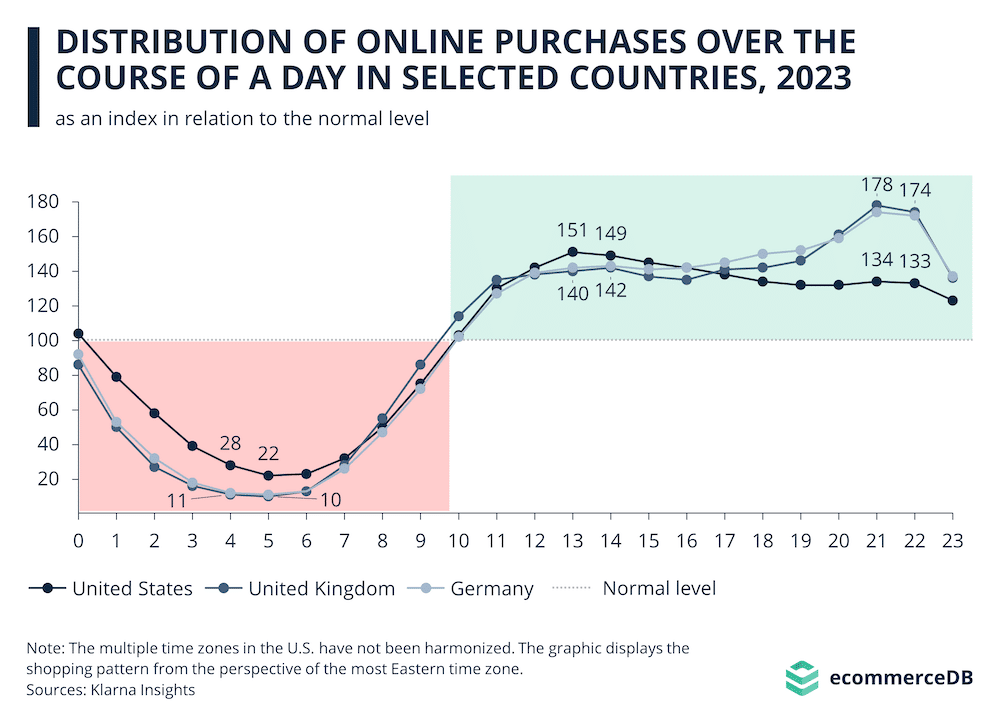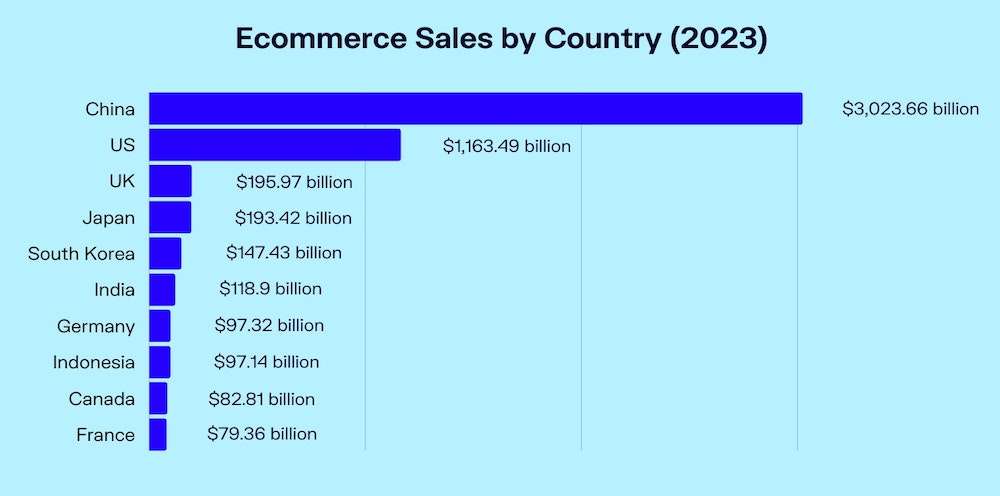Driven by technological advances such as artificial intelligence and changing consumer expectations, companies are facing new opportunities and challenges. Ecommerce is flourishing, but competition is also fierce. This year will be just as important for ecommerce and retail companies as the past year. However, retailers must invest in new ecommerce technologies to remain competitive. But which technologies are relevant or which developments should they keep an eye on?
To help you prepare your business for the new year, we’ve put together some exciting ecommerce technology rules for getting and staying ahead:
- Artificial Intelligence
- Individualisation
- Automation
- Sustainability
- Fast deliveries as standard
- Easy expanding to global markets
Be ready for the coming year and plan your strategic goals wisely!
1. Artificial intelligence – AI is here to stay
Last year artificial intelligence reached the mainstream and impressively demonstrated its immense power to consumers. Over the next few years, it will continue to revolutionise ecommerce by optimising processes and enabling an individualised customer approach. Generative artificial intelligence will play an important role in this.
What is AI and what can AI do?
AI – artificial intelligence, addresses any computer function that ables functionality without recourse to human input. So ostensibly it applies holistically to any autonomous functionality. However, there are several core elements for which the terminology currently addresses. Generative AI, addresses the creative element, that caused the Hollywood strikes, fearing the lack of accreditation of work in the film industry, and the obvious encroachment on copyright that would ensue.
But likewise, much less appreciated so far is the autonomous development of tools for data analysis, the machine element of which delivers as yet unimaginable returns, by knowing your customers better than anyone else. In the context of ecommerce, generative AI can be used to create product descriptions, generate product images and even design new products. Deep learning can not only identify every potential sale you might make to each customer you have, but likewise when, and better still how. Beware sheep technology dressed as lamb, specifically while AI autonomous solutions like MS partner’s SwiftERM, exist to personify the future, alas so too do monoliths that still advocate segmentation and triggered response. By the time the retailer has incurred the cost to train on these, appreciation of autonomous AI alternatives may be too late.
AI is an extremely cost-effective tool for online retailers because it automates manual processes. Consider the cost of staff to handle email marketing for example, before the ROI is calculated the return from every endeavour has a millstone around your neck, long before any profit is achieved. Start-ups particularly can’t afford to waste their opportunities, and shame on anyone who misleads people engaged like this, while they are trying to establish their entire family’s well-being at risk, in the early years.
AI is undoubtedly a technology that is changing the ecommerce game. It remains to be seen what other opportunities will open up in the coming years and how online retailers can utilise them to improve their businesses. However, one thing is certain: artificial intelligence is here to stay and will have a lasting impact on our everyday lives and the ecommerce sector.
(See article: Integrating AI into your ecommerce marketing)
2. Individualisation will become ever more important
As consumers become more aware and familiar with the advanced capabilities of AI, their expectations of how businesses utilise the technology are rising. And so it is understandable that more and more consumers believe that retailers should use AI to personalise recommendations. But the word personalisation has been usurped by old technology, and therefore it is important to make the distinction which excludes segmentation. To do so you should look to use terminology like individualisation or hyper-personalisation.
However, even hyper-personalisation or individualisation doesn’t address a huge obstacle for the retailer, for every minute spent on your website shopping, your consumer spends hours and hours not on it. Of course, some of that time will be on your competitor’s sites, more looking at other mediums like Twitter, Instagram etc. And of course, lots of time addressing interests other than shopping, family, friends, pets, sports, holidays etc. So fabulous CRO or not, fantastic offers or not, if you don’t address the ability to be able to present the right products at the right time, you’re going to fall short. The only cost-effective mediums available to the ardent marketeer for instantaneous delivery are email and SMS. An autonomous application for that, negating huge staff overheads, requires the adoption of the latest technology.

Individualisation for ecommerce email
The only real risk to applications used for consumer individualisation in the near to mid-term is wrapped up in conflicting visions. The companies implementing tech nouse, for the most part, have pristine balance sheets, and healthy margins and can implement AI individualisation technology from some of the most brilliant people on the planet. In an era of hyper-personalisation, companies with all the data should thrive, assuming of course they can capitalise on the trend.
It’s kind of a basket of greed. The more wealthy consumers will want the best of everything (as has always been the case) but can see this accelerating as life can increasingly be optimised & individualised down to the minutiae because every moment is an opportunity when perceived from the retailer’s view.
So what about personalisation? With AI-enabled hyper-personalisation across various niches, everyone with the necessary means is enabled to strive to live a life that’s, in some senses, hyper-optimised and in a world where products and services are fighting to cater a unique experience to each individual, hyper-personalised.
The feedback loop of data tracking and iteration based on results will not so much as create a plan that is hyper-personalised to the individual, but it is almost a living, breathing phenomenon that just happens around them – in the cloud so to speak. It might go so far as to plug in with their grocery apps, ordering a set nutrition plan at predefined intervals each week, further personalising the client’s life. (who may or may not have ambitions of getting fit and helping with the diet and posting luxury fits from dream destinations on their social media, who knows?
The opportunity for capital to flow to retailers with the greatest individualisation, of the best online product content presented to each individual, at the most applicable time. This can only be done by email, as the chances of that person being on the site at the right time are otherwise impossible to predict. The returns will smash holes in previously known targets of CLV achieved.
Maybe a relevant analogy for this overall trend is private banking services. At a certain level of wealth, it is worth the bank’s time to hyper-personalise a wealth management strategy for their clients. In the future when nearly everyone is online, wealthy folks or maybe more academically, folks whose propensity to consume becomes less cyclical, will have access to hyper-personalised offerings from all sorts of companies. If in the past people wanted to wear the same outfit as their favourite actress or model, they now may want to wear a new outfit every day like their favourite influencer.
One of the most powerful ideas/ forces in capital markets is information asymmetry. We’re talking about how, as Thiel described, “the best startups have secrets” idea.
3: Autonomous Software: the future of ecommerce
This year autonomous integration will play a decisive role in ecommerce marketing success. Online retailers must constantly find new ways to keep up with the increasing number of customers and win them over. Sadly many retailers cannot grasp that a medium-level member of staff costs you nearly double their actual salary, and to have the ability to earn with zero human input smashed your returns out the ballpark. However, as the number of users grows, so does the number of returns – a ubiquitous phenomenon in ecommerce.
Utilising ecommerce consumer data to maximum effect
Predictive personalisation generative software is available as a plugin to deliver the use of data as it arrives on your site. instead of concentrating on CRO software which capably personalises products on-site, you are now able to make a phenomenal higher ROI than this, for each consumer, by utilising the data back to the consumer.
Consider fishing, you can sit on a harbour wall waiting for a nibble, or you can take a huge trawler out to surround and capture an entire shoal. The shoal in the analogy is product purchases, rather than, new consumer acquisition. This is the power of PPS.
To quantify the distinction, acclaimed research consultants McKinsey have undertaken multiple studies which illustrate that as much as a twenty-fold increase in ROI is achieved, against all the other methods of ecommerce marketing combined. Including CRO, multi-media advertising, social media ecommerce, email marketing etc.
This distinction is offering the exact products that each consumer wants to see when they want to see it. They won’t have to find your site, as their unique selection is presented to them via their inbox.
You might believe that data once used becomes redundant, but knowing a pattern, style, colour-way, preferred materials etc as well as the buying pattern i.e. how they arrive at every purchase that individual makes is key. It builds an essential and elaborate dichotomy of data, capable of perpetually increasing each consumer’s customer lifetime value with you, and most importantly, perfecting each consumer’s ROI. You spend less to achieve more.
4: Sustainable action in the new era of conscious consumption
Sustainability trends have become increasingly strong in recent years and it is foreseeable that this trend will continue in ecommerce this year and next. This is mainly because today’s shoppers are much more conscious than they were a few years ago. They pay attention to environmental awareness and want to know how products are manufactured and the supply chains behind them. Customers want to consume in an ecologically and socially responsible way.
The pros of sustainability
For companies, this represents a challenge, but also an opportunity. After all, those who focus on sustainable trade practices can not only score points by acting in an environmentally conscious manner, but also strengthen their brand and attract new customer groups. The range of measures is very broad: from efficient packaging materials and the avoidance of plastic and returns to energy-conscious site management, there are many opportunities for there are many opportunities for sustainable action. Another important factor is the increased use of climate-friendly means of transport in logistics. UPS carbon neutral, DHL GoGreen, DPD Total Zero or GLS ThinkGreen, for example, offer climate-neutral shipping solutions – all shipping service providers that you can easily connect to Shipcloud. It is particularly important that transport management is optimised and alternative drives are used. It is particularly important to optimise transport management and use alternative drives.
It is precisely because sustainability has become so important for customers that companies attach great importance to presenting their processes transparently. Customers want to know exactly what they are getting and where it comes from. Accordingly, companies should proactively advertise how environmentally friendly they are, as this can help them gain a reputation and increase sales.
All in all, there are many reasons for companies in the ecommerce, logistics and shipping sectors to focus on sustainability:
- It protects the environment
- Strengthens the brand
- Boost business by attracting an additional customer group.
Companies that miss out on this trend may no longer be competitive in the future. Companies should therefore carefully analyse and optimise their processes – for more sustainable success in the future.
5: Fast and free delivery options remain a must for online shoppers
It seems to be a paradox – on the one hand, shoppers are becoming increasingly aware of environmental awareness and sustainability, while at the same time, they continue to value fast and free delivery. Fast and free delivery options will remain an important aspect for online shoppers over the coming years. This is because they not only expect a wide selection of products, but also speedy processing of their orders.
Companies aware of this expectation and set appropriate standards will have a competitive advantage. In many European countries, 3 to 5 days delivery time is considered acceptable. A longer waiting time, on the other hand, is only considered satisfactory by a small proportion of online shoppers.
These figures illustrate the importance of smooth logistics in the field of ecommerce. Companies must therefore optimise their processes to meet the increasing demands.
How can companies manage this balancing act between sustainability and customer expectations?
One option is to invest more in local warehouses and partner with local shipping service providers. This can shorten transportation routes and thus reduce emissions.
Innovative technologies should also be used: From intelligent route selection and optimized shipping and return processes to the use of environmentally friendly vehicles. Bundling orders to reduce unnecessary journeys and alternative delivery options such as packing stations or pick-up points are also sensible options. There are numerous approaches to improving the efficiency and sustainability of supply chains.
Ecommerce companies need to be aware that fast and free delivery options are a key factor in attracting shoppers. At the same time, they must not come at the expense of the environment. By using innovative solutions and actively working on sustainable logistics, we can master the balancing act between customer satisfaction and environmental responsibility.
The topic of “fast and free delivery options” therefore remains relevant even in times of increased environmental awareness – but it requires a creative approach and an awareness of the responsible use of resources.
6: Expanding to the global market becomes easier
In the context of international ecommerce, there is one particular trend that is worth looking at: Expanding to the global market will become easier. This opens up new opportunities and challenges for companies of all sizes.
Trade barrier reduction
The reduction of trade barriers and the conclusion of new trade agreements will make it easier for retail companies to establish themselves in new markets. Large corporations have been operating internationally for a long time, but now smaller companies also have the opportunity to tap into larger markets.
This development not only offers growth opportunities for companies but also extends the reach of ecommerce consumers worldwide.

Advanced technology
Another factor driving this development is more advanced technologies. Innovative logistics systems and improved payment methods allow products to be sold across borders. New platform solutions enable seamless integration into different country markets, providing a more efficient global presence.
However, expanding into the global market also brings challenges. Cultural differences need to be taken into account and local specifics need to be considered – whether in terms of product customisation or customer service. Thorough market research and a sound understanding of the target group are essential.
Overall, the ecommerce trend promises to simplify expansion into the global market. Companies that adapt early and capitalise on the opportunities will benefit from greater reach and new growth opportunities. International trade relations will continue to grow in importance and significantly shape the ecommerce sector in the coming years.
Conclusion
Overall, the next couple of years offer great opportunities for ecommerce, but also immense challenges. Companies will need to adapt to technological advances early such as artificial intelligence and fulfil rising consumer expectations. To remain competitive, it is crucial to invest in new ecommerce technologies and keep an eye on trends. We have presented six groundbreaking ecommerce trends that can help you prepare your business in the best possible way. Plan your strategic goals wisely and take advantage of the opportunities the coming year offers.





